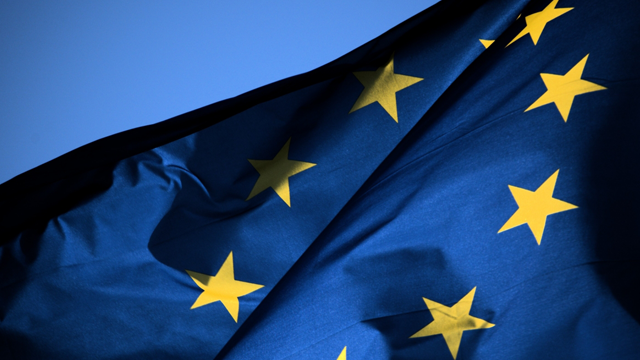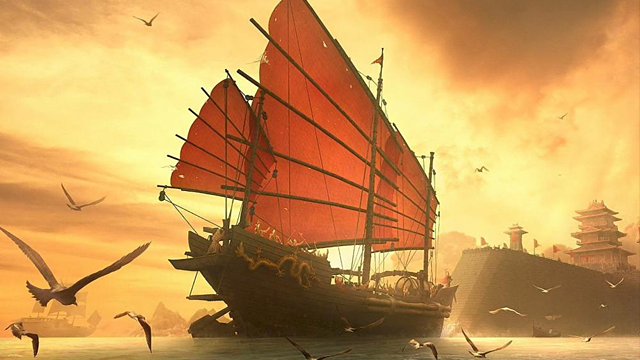7 main trends of 2014 in the mobile games industry
About the dawn of “minimalistic games”, the intensification of competition between game engines, Chinese expansion and much more – in our final material for the year.
The past year has been very rich in major events and trends. We tried to highlight the main ones, however, it so happened that our sample thematically, first of all, affects the business side of the industry, and not the gaming one. This was done, though not intentionally, but “at the box office”, since we will talk about the games themselves in a separate material.
1. The year of big money
Markus Persson became a billionaire at the age of 35 (photo: minecraftstoryofmojang.com)
If you choose the constellation under which 2014 passed, then this is, of course, the non-existent constellation of the Big Dollar. We wrote almost daily about how many millions of ever-green presidents invested in one or another gaming company. Although the deals were also impressive. Recall the main ones:
- Microsoft acquired Mojang for $2.5 billion;
- Zhongji Holding gave $960 million for DianDian Interactive;
- Churchill Downs Incorporated bought Big Fish for $885 million;
- Chinese Universe gave $434 million for Elex.
Plus, we must not forget how much the gaming companies were evaluated this year. For example, Machine Zone, the authors of Game of War, was estimated at $ 3 billion, Kabam – at $ 1 billion.
In addition, a game has appeared on the market that has officially earned $1 billion on mobile users. It became Puzzle & Dragons from GungHo.
Along with a lot of money, non-core companies came to the gaming market. For example, the above-mentioned Zhongji Holding is engaged in metal trading, real estate and the sale of construction materials in China. It is possible that next year we will witness the mass arrival of such non-formal companies for the industry on the market.
Related trend: Mobile gaming companies Entering IPO
2014 is hardly a very high-profile year in terms of companies entering the stock market. Most likely, 2015-2016 will be much richer in this regard. However, it seems to us that the trend is strengthening. During the reporting period, at least three companies involved in the development and publication of mobile games placed their securities on exchanges: King (Candy Crush Saga), Gumi (Brave Frontier) and iDreamSky (published Fruit Ninja and Temple Run in China).
The relatively high transparency of the mobile games market, by the way, leads to funny incidents. For example, on the Tokyo stock exchange this year, the price of Mixi shares jumped following the position of Monster Strike in the Japanese cash register.
2. The dawn of “minimalistic games”
Dong Nguyen is the main star of “minimalistic” games (photo: Peter Foley/Bloomberg)
Throughout the first half of the year, new names were rapidly breaking out in the sky of the industry: Flappy Bird, Threes!, 2048, Timberman, Make It Rain, Don’t Touch a White Tile (Piano Tiles) and many others.
All these games combine the most simple rules and a very high difficulty of passing (scoring). Projects also, as a rule, were devoid of heavy monetization mechanics and earned either through advertising or distributed on a commercial basis.
The fact that the original projects “fired”, first of all, on ideas and were visually simply decorated, led to an influx of clones, which only strengthened the trend.
At the same time, the reasons for the success of the original games were different. Flappy Bird – “word of mouth”; Threes! the Apple feature; the authors of Make It Rain spent money on promotion at the initial stage.
The success of such games is considered by many to be completely accidental, although Ketchapp Studio has quite successfully put on stream the development and publication of such projects. The studio has released about 20 unique titles over the past 12 months, many of which are well-known (for example, 2 Cars, Stick Hero, Amazing Brick and many others). By the way, the company is now in the Top 10 mobile publishers by downloads in the world.
Related trend: a rich harvest of clones
Cloning successful projects has always been a sore topic in mobile. But their harvest in 2014 turned out to be more impressive than ever. While reputable companies “with a budget” continued to copy Clash of Clans (this year the turn came to Acticision and Rovio), small teams massively made their Flappy Bird and 2048 (the latter, however, is a 1024 clone game itself, which simplified Threes!). It got to the point that the App Store and Google Play began to independently “clean” the stores from clones.
On the front of the fight against clones, King distinguished herself, who managed to get the right to the word Saga, get into a loud scandal with the authors of The Banner Saga because of it, and forced 6Waves to remove a number of Match-3 from electronic markets.
3. Devaluation Indie movements
Monument Valley is one of the central games of this year, it can be safely counted among the “indie”
This trend is partly related to the previous one, but despite the similar development, it has slightly different prerequisites.
So, the unexpected popularity of games with conditional, non-standard or retro graphics, as is often the case on the mobile (and not only) market, has led to the emergence of numerous followers who, following the authors of the original titles, whose games really differ in a non-standard approach to visual design and often game mechanics (Year Walk, rymdkapsel, Ridiculous Fishing, Monument Valley, Room, and so on), began to call themselves indie developers. However, unlike the leaders of the conditional movement, most of them were not able to offer anything unusual, non-standard, moreover, high-quality. So in the eyes of the market there was a devaluation of the concept of indie, around the definition of which many copies were broken.
Indie means independent development, but, first of all, here we are not talking about independence from the publisher, but about independence from the dictates of the market and control over the creative side of development by certain financial institutions. In other words, the initial meaning of indie is akin to festival cinema, which is designed for a narrow audience of viewers and does not set itself the task of making money at the box office. The main thing is the self-expression of the author.
But fate played a cruel joke with such games. Being designed for a narrow audience of users, these projects suddenly became popular (not without the help of Apple, which promotes such titles). And the techniques that were used in them contrary to existing trends (eight bits instead of 3D, paid type of distribution instead of free, and so on) suddenly turned into the mainstream. For this reason, today, if you call yourself indie, you are more likely to cause boredom and irritation than interest.
4. Increased competition between game engines
While Unreal Engine 4 is not as popular among game developers as its predecessor
The main merit of Unity is that the engine radically reduced the cost of development, in fact, democratized the creation of games. One of the results of this revolution was the mass character (and, in fact, the devaluation already mentioned above) of “indie”.
At the same time, there was a crisis in the market of third-party engines for console and PC games (Unreal Engine, Cryengine, Gamebryo). Their place was taken by engines developed by market leaders for internal projects (the most obvious examples: EA, which switched to Frostbite, as well as UbiSoft, using AnvilNext and Dunia Engine 2). This forced the former titans to change. Part of the changes just happened this year.
At the beginning of 2014, Unreal and Cryengine radically changed the distribution business model. Now you can use both by subscription. A month of Unreal Engine costs $19, a month of the German equivalent costs $9.9.
The story didn’t end there. Epic Games has also changed its PR policy towards the developer community. The company’s engine not only has a blog, but also regular updates, as well as its own analogue Asset Store.
In general, companies that perceived Unity’s success as a warning about the presence of a commercial niche have become more active in the market.
5. Brands have started to play a dominant role in the market
Kim Kardashian is one of the most unexpected faces of the mobile games industry this year (photo: huffpost.com)
The high cost of unmotivated downloads forced in 2014 to look for new ways to increase user bases. One of the most convenient ways to recruit new users has become the use of popular media brands.
The fact that the release of a game based on a popular movie/show will bring a certain level of downloads /revenue has never been a secret behind seven seals. However, the market dominated by free-2-play has forced companies to look at this practice quite differently.
Maximizing the ROI of a branded project in the traditional market looked like this: create a cheap project and release it at the time of IP actualization (the beginning of the film rental). Games that are final products have a short tail of sales (most purchases are made in the first weeks), so the quality, in the case of the release of games “based on motives”, does not radically affect sales.
In the case of games-services, the situation is reversed. If there is no quality product, there is no money. The brand, in turn, here no longer acts as a selling factor, but as a cheap one (relative to traffic prices) a way to acquire users. It also has the potential to increase retention.
Glu has clearly shown how to work with brands this year by releasing the game Kim Kardashian: Hollywood, which earned about $ 50 million in six months.
6. The fight against free-to-play at the legislative level
The European Commission in 2014 seriously took up free-to-play
There were no high-profile scandals related to the unintentional purchase of a large amount of game currency by a child for real money. But there were lawsuits against Apple and Google. They were followed by initiatives at the state level in the UK, the USA and the European Union.
Ultimately, this led to the rejection of the word free in Google Play and the App Store; the need to enter a password every time you make a purchase; as well as the possibility within Google Play to refund money within two hours after purchase.
No one refuses the very concept of free-to-play yet, although some analysts predicted the possibility of transferring all such applications almost into a separate group.
7. Chinese publishers and mobile game developers have begun to expand into the global market
China has begun to expand to the West
Two years ago, many discussed plans to enter the Chinese market. Most of the conversations, however, boiled down to the fact that the market is complex (a lot of markets, pirates, little money, a completely different culture among the population), and therefore it is better to wait for now.
We waited. According to the results of November 2014, the first place in terms of game downloads and the third in terms of revenue in the world is held by the Chinese Tencent. Yodo1, IGG, ELEX, Tap4Fun, iDreamSky and many others are also active on the world market.
And there is nothing surprising in their expansion, given that mobile games in China earn more than $1 billion per quarter.
New players often behave very aggressively. For example, they check how much the game can earn in the box office top in a high position by independently pouring the necessary amounts into the IAPs (starting from November in the Russian box office top, it was possible to see games not translated from Chinese in the top places in the box office chart).
At the same time, it is becoming easier for Chinese users to pay for their purchases in the App Store, and Chinese advertisers accounted for at least 35-40% of global spending on mobile traffic only at the beginning of 2014.
***
And what events/trends did you remember in the outgoing year?







